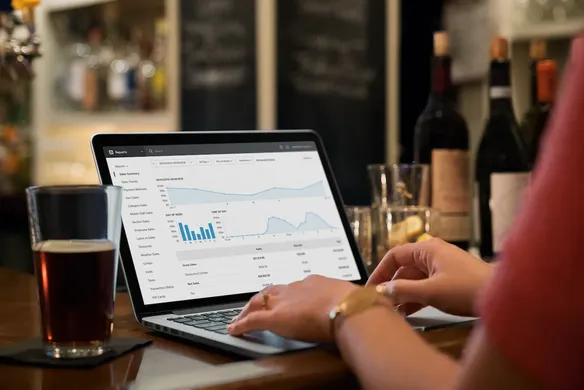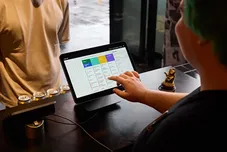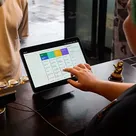Table of contents
If you’re just collecting data and not putting it to work for you, then what’s the point of collecting data at all? Using analytics tools to create things like point-of-sale reports (POS reports) can help you better understand your business and make informed decisions that get you closer to your goal.
What is POS Data?
Point-of-sale (POS) data is information that is collected from every transaction you have during the day from the POS system. Most POS systems track the basics, like items purchased and the amount of a transaction.
Sophisticated POS systems also gather other information that helps you better understand your business and your customers. For instance, you can use data from your POS to determine how often a customer visits your establishment and what they spend when they’re there.
Why is POS Data important?
As mentioned above, POS systems collect a large amount of data, which could be beneficial if you know how to integrate it into your business strategy. If you’re using a POS that tracks all of this information, it’s likely that you have access to built-in analytics tools.
Once data is analysed, you can track your inventory, better understand your customer behaviour, leverage your marketing campaigns, and the benefits are unlimited if you know how to effectively analyse your data.
These tools can help you parse through all of the data to spot trends and find insights that can help you make decisions.
7 POS reports you should be using
There are several types of POS business reports that you can use to benefit your business, like sales reports, inventory reports, employee success reports, and store comparison reports (for businesses with more than one location). Let’s take a deeper look at some of these reports.
1. Sales reports
POS reporting can enable you to track everything from sales by location to sales at a certain time of day. Depending on the level of detail you want, these reports allow you to go beyond general performance and drill down to specifics.
2. Inventory reports
The ability to check inventory quickly and easily is essential, especially during your busiest times. An inventory report pulled from your POS data allows you to do so in a simple format so you know at a glance what is selling, what isn’t, and what you should reorder.
3. Employee reports
If you have employees, you can also use reporting to analyse their performance. An employee POS report should show you sales per employee, what their tips look like, and how much revenue they bring in per hour worked.
4. Store reports
If you have multiple locations, you can use POS reporting to compare performance across stores. If you dig into those numbers, you might determine that each of your stores needs a different marketing strategy or that the inventory that works at one location doesn’t work at another.
5. Customer reports
POS systems collect valuable information about your customers, which can be used as insights to incorporate into your marketing plans and therefore, retain your existing customers.
6. Returns, exchanges, refunds
Returns, exchanges or refunds might not be the most pleasant things that your business expects. But it could turn out to be useful if you utilise the data from POS reporting to understand which products are exchanged/returned, types of preferred refunds and make the right changes to improve your revenues.
7. Top selling products
Data about your top selling products from the POS Analytics Report might be overlooked. It’s the place to find ways to improve sales efficiency by discovering the common attributes in the top selling products, which you can pay more attention to promoting the right products and ensure enough inventory for the top selling products.
Learn more about Square POS Analytics »
How to use reports to make business decisions
POS reporting tools can provide invaluable information to help you, as a business owner, maintain the health of your business and grow. But information is only useful if you know how to use it.
Here are some ways you can use all this data to optimise your business.
1. Use sales data to make staffing decisions
Are you staffing too many employees on your least busy days, or vice versa? Who are your best-performing employees? Are you scheduling them on your highest-traffic days? Sales data can help you determine your busiest days and top-selling employees so you have the right coverage every day.
2. Compare performance by location to customise your approach by store
When you have more than one storefront, POS reporting can help you stay on top of what’s happening at each location. For example, by reviewing sales and employee performance, you can determine whether the team at the newer location might need some extra training from your veteran employees. Or you might see that one location sells more of a certain product than another and decide to shift how you stock those stores.
3. Use inventory data to make purchase decisions
With POS reporting, you can always access current stock levels, so you know what’s selling and what’s not. This can help you determine what you should reorder and whether to put some slow sellers on sale.
4. Use transaction data to determine seasonality
By looking at transactions week over week, month over month, and year over year, you should start to get a good idea of when your peak season is (or whether you have peaks and troughs at all). You may even look at sales on a day-by-day basis to determine if there are certain days or times when you see increases in traffic.
Knowing when you’re usually busy and slow can help you determine staffing and inventory needs, but it can also help you decide how best to use marketing and promotions.
5. Use customer information to craft marketing messages
A POS that has an integrated CRM (like Square) can give you insight into who is purchasing from you. If you can determine how many new versus return customers you have (and how much revenue each segment brings in), you can plan marketing to either encourage similar behavior or shift to new behaviors. For example, if you know that you have very few repeat customers, you might try emailing all your new customers with a discount they can use on their next visit.
Make more informed decisions with Square POS
Square Point of Sale lets you keep a finger on the pulse of your business. Your personalised dashboard gives you quick insight into what your business is doing so you can manage your business from anywhere, in real time. And its detailed analytics provide deep insights into all your locations, employees, and items as well as a view into how your customers spend and how frequently they return.
All of this allows you to make better informed decisions about your business so you can spend less time on paperwork and more time doing what you love. Get started with Square POS.
![]()











